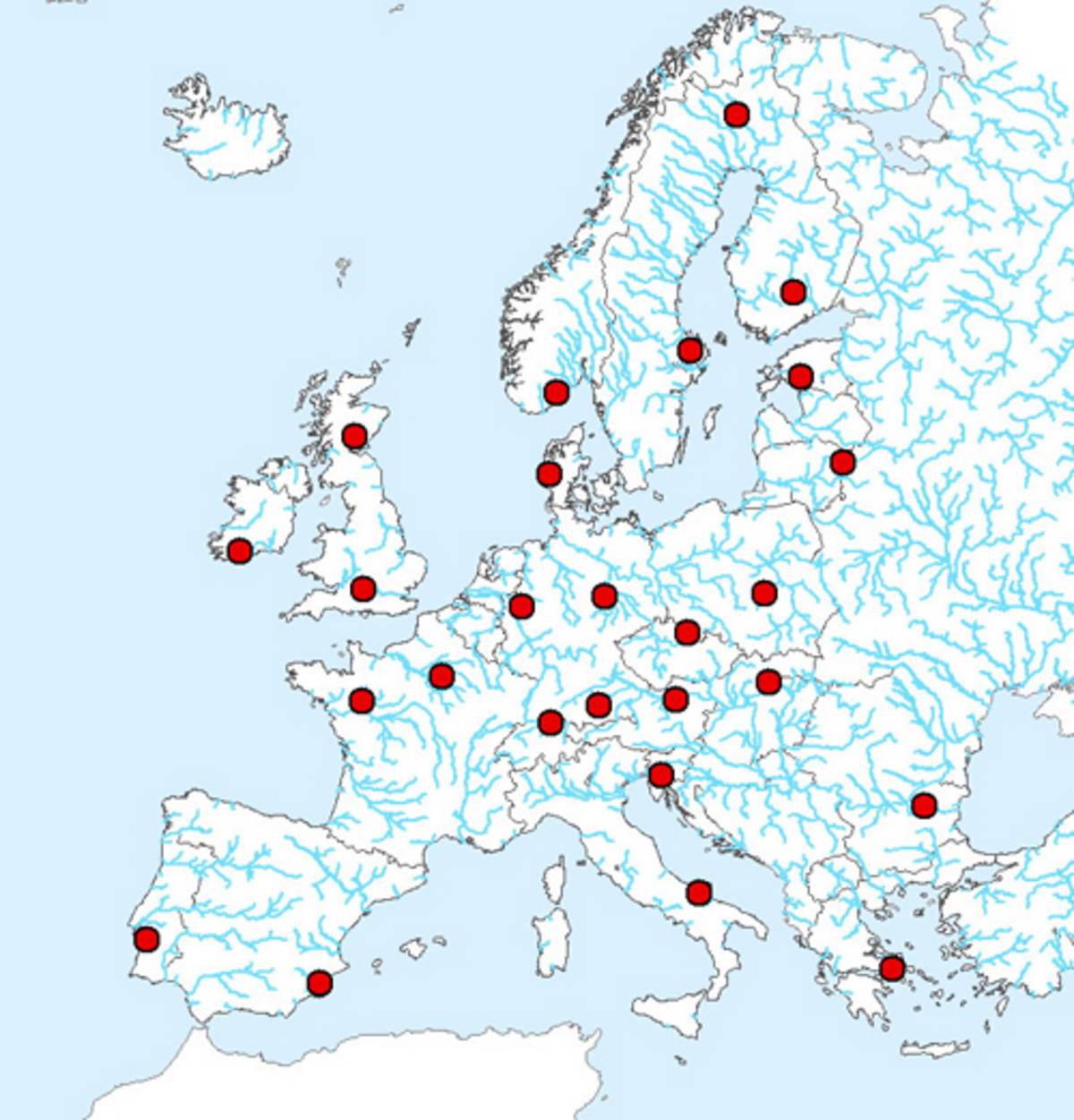Overview
PEER and EURAQUA have jointly established a network of hydrological observatories with the aim of supporting both hydrological research and water policy development. A key driver is to address issues of environmental change at the European scale, for example how flood risk and water scarcity will be impacted by climate change.
Observatories are based on existing infrastructures, long-term monitoring schemes, and data management services, which PEER and EURAQUA members provide or support. In all cases the observatories have already provided facilities, data or information to enable a wide range of research activity, and are therefore well known to the local network partner. Observatories are relevant to the scale of water resources (i.e. 100s to 1000s of km2) but may also contain small (reach or plot) scale research sites.
Because of the independent establishment and operation of the observatories, the resources and facilities provided by each observatory are not standardised or uniform. However, an objective of the network is introduce commonality where appropriate, so that methods and analyses can be readily transferred between sites, or applied to the network as a whole, or a sub-set of observatories.
The observatories have been selected by the local network partners based on the particular characteristics or facilities of the observatory, or the perceived benefits the observatory brings to the network. It is planned that the network is dynamic and can evolve in response to technological developments, novel applications, and to address gaps.
Below is a map showing the locations of the observatories, and of list that provides links to descriptions of the observatories, and the facilities and resources that are available.

Observatories
- Ammer (Germany) (pdf, 257 KB)
- Athens (Greece) (pdf, 240 KB)
- Candelaro (Italy) (pdf, 437 KB)
- Drzewiczka (Poland) (pdf, 367 KB)
- Erlauf (Austria) (pdf, 337 KB)
- Fyris (Sweden) (pdf, 596 KB)
- Gran Morin (France) (pdf, 84 KB)
- Kennet (UK) (pdf, 339 KB)
- Lee (Ireland) (pdf, 7 KB)
- Metuje (Czech Republic) (pdf, 306 KB)
- Pallasjärvi (Finland) (pdf, 74 KB)
- Parnu (Estonia) (pdf, 1 KB)
- Reka (Slovenia) (pdf, 576 KB)
- Rimava (Slovakia) (pdf, 444 KB)
- Rur (Germany) (pdf, 345 KB)
- Saale/Bode (Germany) (pdf, 837 KB)
- Sado (Portugal) (pdf, 798 KB)
- Scorff (France) (pdf, 158 KB)
- Segura (Spain) (pdf, 7 KB)
- Skjern (Denmark) (pdf, 1.6 MB)
- Suur-Päijänne (Finland) (pdf, 362 KB)
- Tay (UK) (pdf, 622 KB)
- Tcherny Lom (Bulgaria) (pdf, 296 KB)
- Thur (Switzerland) (pdf, 637 KB)
- Tovdal (Norway) (pdf, 76 KB)
- Zeimena (Lithuania) (pdf, 199 KB)